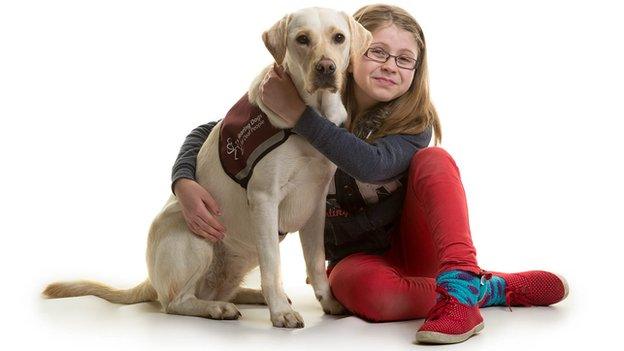Cwmbran Deaf Choir allowing isolated youngsters to be heard
- Published
Cwmbran Deaf Choir performs at a residential home
An almost star struck schoolgirl asked "are they performing today?" as a group dressed all in black with white ties and gloves trooped past.
This degree of celebrity among fellow Cwmbran High School pupils is a world away from the isolation and loneliness many choir members felt before joining.
Last Saturday they performed in front of 56,000 people at the Principality Stadium, while they were now making their way to their latest show - for 20 pensioners at Ty Gwyn residential home.
Being part of the group has allowed many of the 12 members, who are severely or profoundly deaf, to be part of something for the first time.
Their upbeat performances using sign language - of songs by artists such as Take That, Celine Dion and Journey - have made them an integral part of the school and allowed them to connect with many others outside.
"When Llantarnam and Fairwater comprehensives closed and moved to the new high school [in September 2015], there were about 100 sixth formers coming together for the first time," said Claire Simms, the head of the deaf unit.
"The choir taught them to perform 'Bills' by LunchMoney Lewis together, which really helped the transition.
"Most of their songs are about going for your dreams, not being held back, because these children face barriers most other people don't."
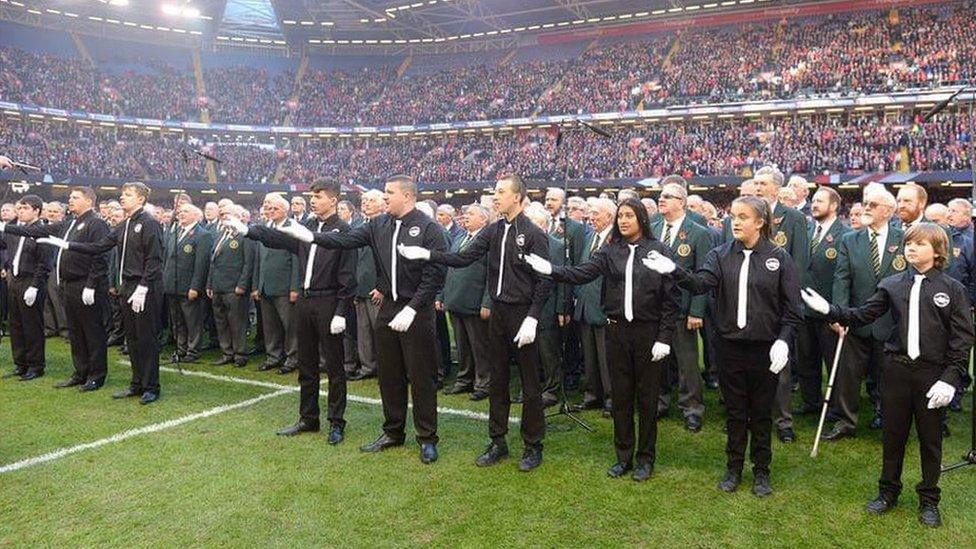
The choir performed the Welsh and Australian national anthems in sign language before last Saturday's international rugby match
The deaf unit's 15 pupils, drawn from Newport, Torfaen and Blaenau Gwent, would leave school and could suffer loneliness during holidays and evenings, as they were unable to communicate properly with local children.
But when Llantarnam school's music teacher Mary Cole was asked to introduce them to music in 2011, she found a way of opening up a whole new social world.
"When lyrics are translated into sign, they find it so much easier to understand the emotions connected to them," she said.
"They can't hear it in my voice but can pick it up in my expressions and it is amazing how they convey it (in sign)."
Mrs Cole used others methods - such as asking pupils to take their shoes off on stage to feel the vibrations of music - and found children not confident enough to give a presentation in class came alive.
The choir has now appeared at London's Royal Albert Hall, Cardiff's Motorpoint Arena and auditioned for Britain's Got Talent.
"They are quite nervous about talking to strangers and wary about the community. But they just walk up on stage and perform," Mrs Cole added.
The highlight so far came last Saturday when they were asked to accompany the male voice choir and sign the Welsh and Australian national anthems ahead of the rugby international at the Principality Stadium.
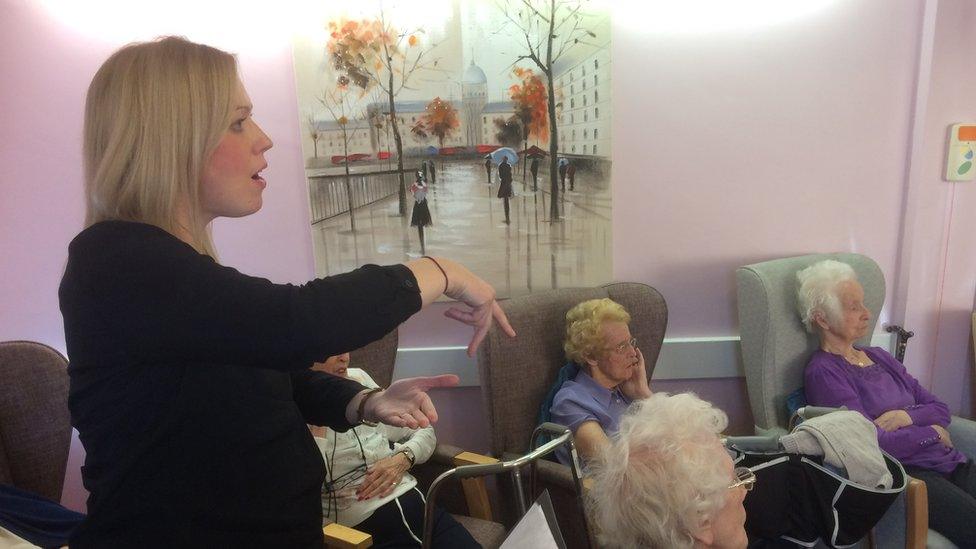
Mary Cole was a music teacher at Llantarnam Comprehensive but has now learnt sign language and is a full-time part of the deaf unit
The sense of belonging and purpose it has created is illustrated by the fact that Alex Miller, 22 and Tyler Mason, 21, both from Newport, have remained part of the choir despite having left the school.
"I feel part of a community here, the deaf world," said Mr Miller.
"It's so important, as I feel at home and can talk using sign language only."
There are an estimated 1,700 deaf children in Wales, according to organisation Children in Wales, which is about 1.6 in every 1,000 babies born.
Many are supported in mainstream or private education, like Jack Harris, 13, who was studying at Newport's Rougemont School with the help of a signer.
But he struggled and says he now feels more comfortable at the unit and as a member of the choir.
All the children have faced difficulties, perhaps none more so than year ten pupil Adrian Bucik, who moved to Wales from Poland with his parents about three years ago.
They spoke no English which meant he did not have the advantage of lip reading or communicating through written word or on social media.
But he has now learnt British Sign Language and is an integral part of the choir - and performs a solo for the Take That song Shine.
"They experience a lot of social problems and are too worried to do things like go to the bank or hairdresser on their own," added Mrs Cole, who runs the choir with volunteer Lou Heirene.
"Being with others who can sign gives them a security and they feel part of a community more than they ever have before."

Alex Miller signs with teacher Lisa Jones
- Published18 December 2015
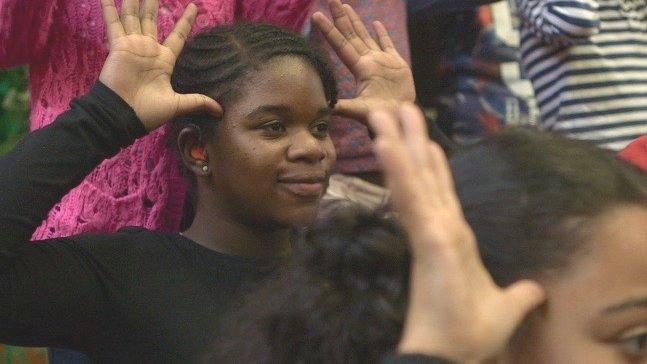
- Attribution
- Published30 June 2016
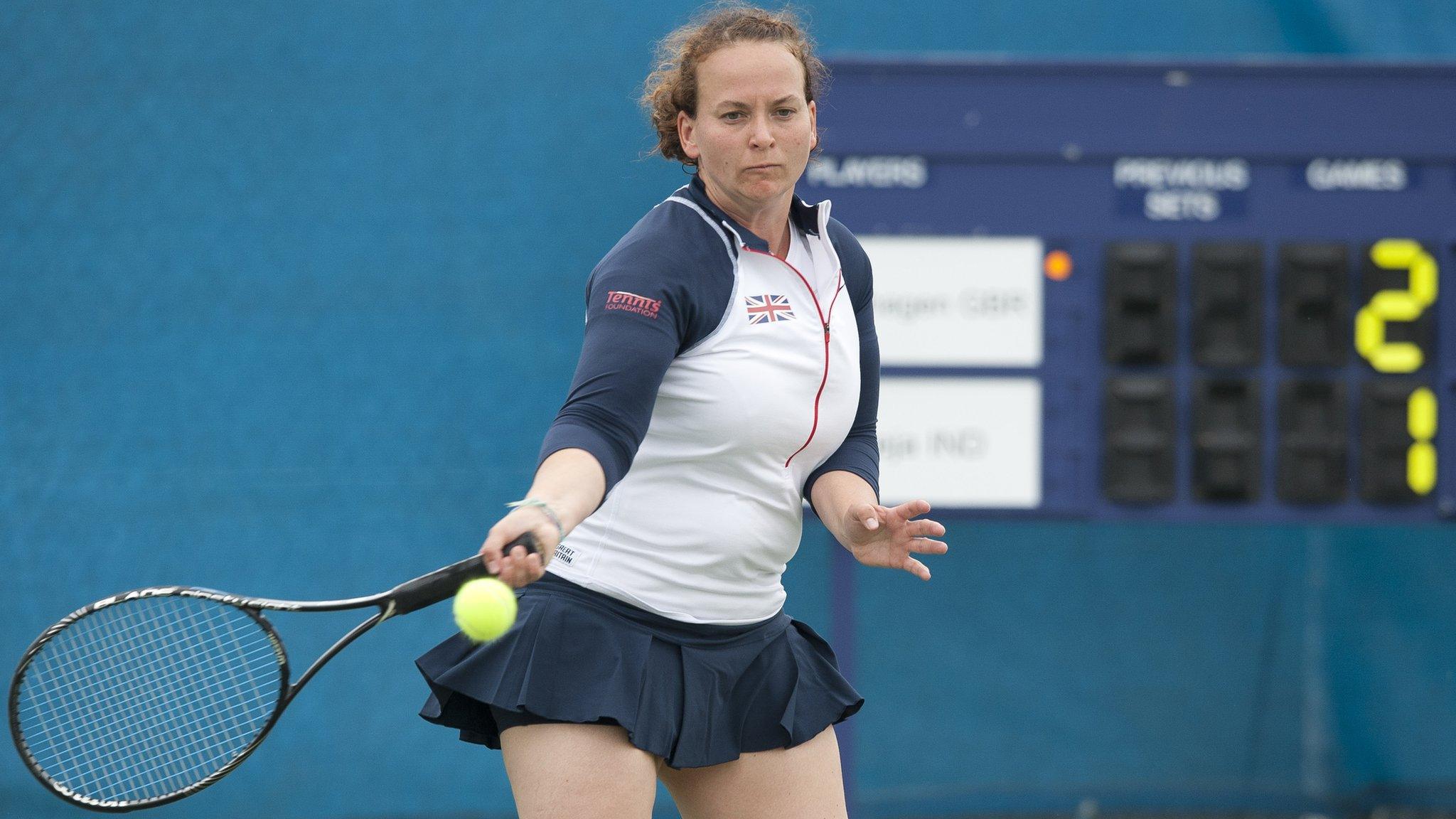
- Published15 April 2015
